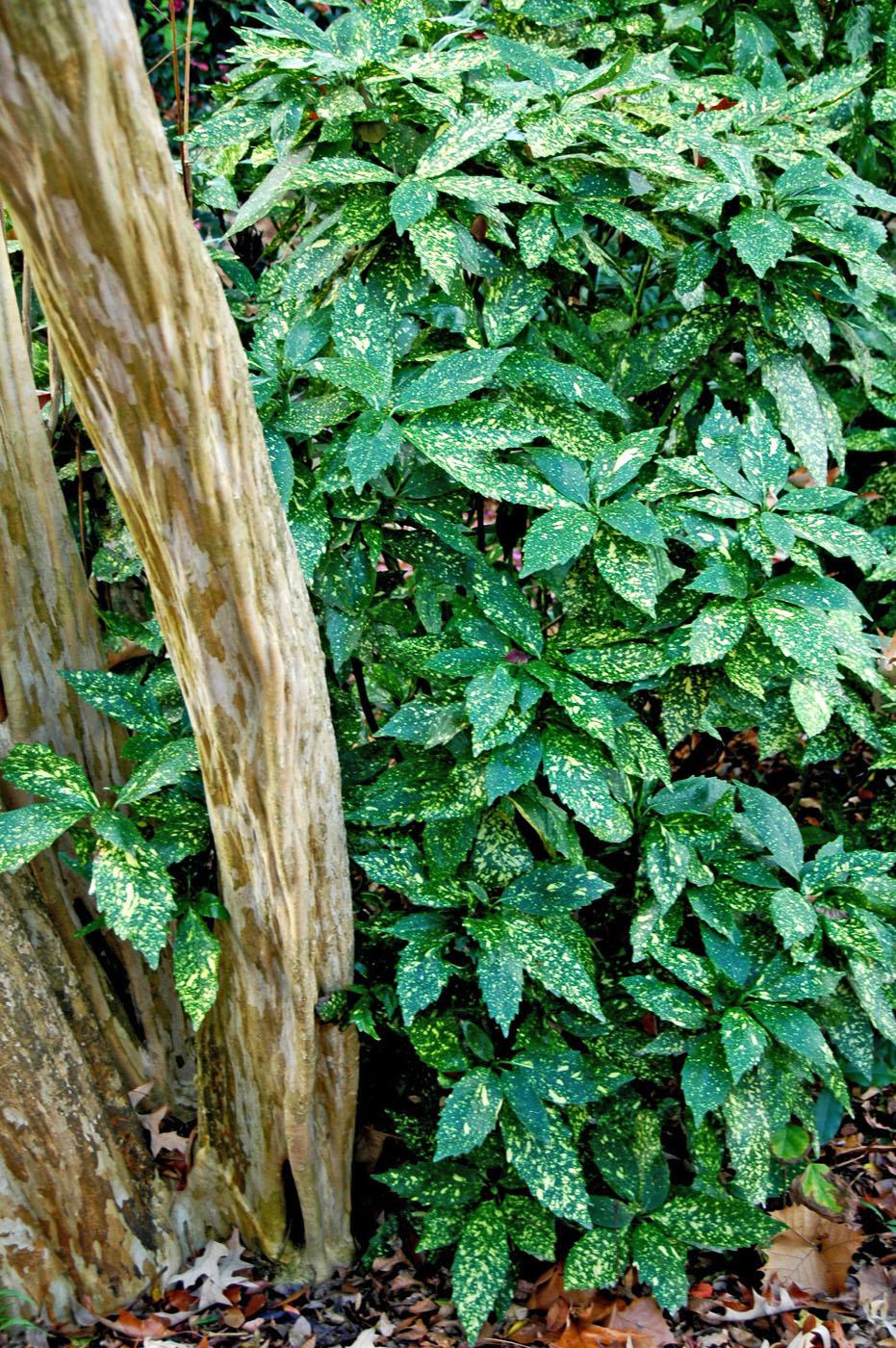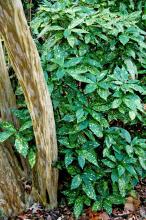Information Possibly Outdated
The information presented on this page was originally released on December 27, 2007. It may not be outdated, but please search our site for more current information. If you plan to quote or reference this information in a publication, please check with the Extension specialist or author before proceeding.
Sprinkle Gold Dust aucuba in landscapes
By Norman Winter
MSU Horticulturist
Central Mississippi Research & Extension Center
Once a year, the horticulturists from Mississippi State University travel around to see how the nursery industry is doing and brainstorm how we can help. While touring Mynelle Gardens in Jackson, an old spotted aucuba caught my eye.
Mynelle Gardens is undergoing restoration, and you can see exciting plans being put into place everywhere. If you've never been there, think about making a trip to the gardens this spring during the azalea and dogwood season.
The garden is heavily wooded, which adds a lot to its Southern charm. It also gives good clues about what grows well in sun-challenged areas. As we were walking, I came upon an old crape myrtle with slick, glossy wood partnered with the aucuba.
If you ever look for a way to add winter interest and texture to your landscape, this partnership is ideal. The aucuba, known botanically as Aucuba japonica, is cold-hardy to around minus 5 degrees. Most reference books suggest it would need a little extra protection in zone 6, but it's a great plant south of that. In the more northern areas of the country, it's used as an excellent houseplant.
What makes it such a great plant with tall trees in the landscape is its variegated foliage. The aucuba we call Gold Dust has been around since the late 1700s. In reality, there are probably close to 25 varieties, some with different patterns of variegation and some that are all green. To confuse matters more, there are male and female plants as well.
They can produce some of the largest red berries in the landscape. For successful berry production, you will need female varieties and a male or two as well. You will not be disappointed.
The aucuba is from the Himalayas, but it looks for all the world as though it would be just as happy in the tropical garden as in the woodland setting. It reminds me of a croton in some ways, and there is actually a variegated female variety called Crotonifolia.
If you decide to plant some, put them in a bed where you have prepared the soil by incorporating 3 to 4 inches of organic matter like peat, humus or compost. Dig the planting hole two to three times as wide as the rootball, but no deeper. When you dig the holes wide, you are opening the door to fast root expansion and establishment in your bed.
Moisture is critical the first year for newly planted shrubs, so water deeply when required. Feed four weeks after transplanting with a slow-release fertilizer like an 8-8-8 or 12-6-6 at 1 pound per 100 square feet of bed space. Fertilize established plantings in March.
Prune lightly anytime to improve shape and keep plants bushy. To generate new canes, remove older ones near the base during late winter. Mealy bugs can be a problem occasionally, so treat them as needed, but don't let this deter you from planting aucuba.
In the tropical-style garden, group aucubas boldly with fatsias, hostas or plantain lilies. In both the tropical and woodland settings, use the variegated forms with blue hydrangeas. The combination is a little gaudy but very colorful. Bedding plants also work quite well as companions. Grow lilac impatiens in front of the more brightly variegated forms.
As I consider ways to help the horticulture folks in this area, encouraging more people to plant aucubas is near the top of the list in 2008.








